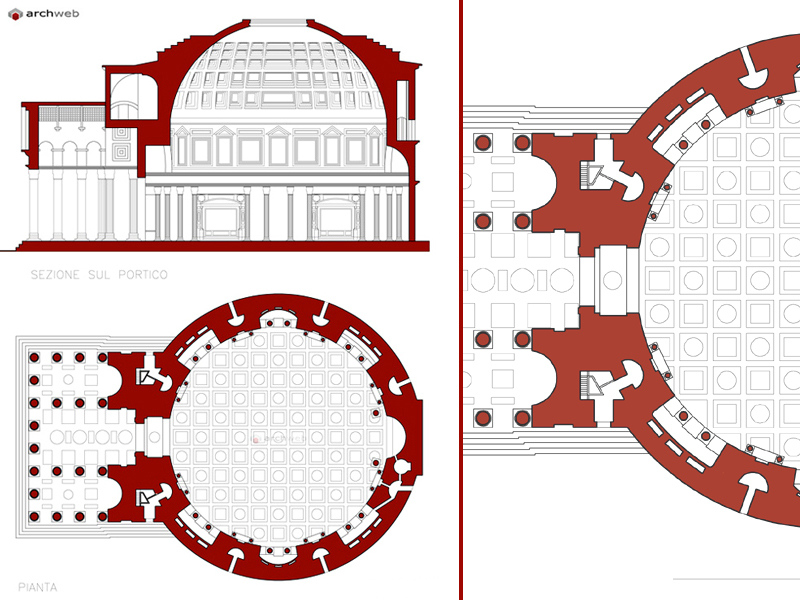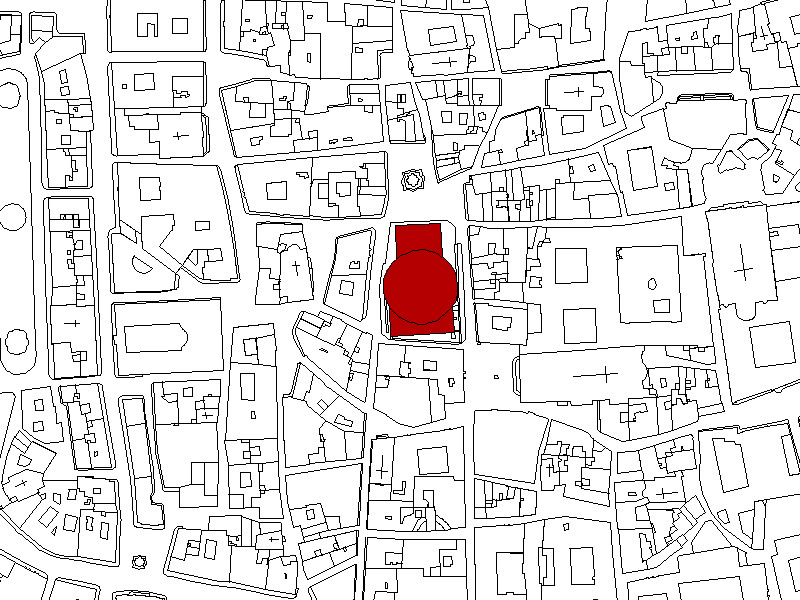Pantheon
Rome 113 century AD
Location
Roma - Piazza della Rotonda, 00186 Roma RM
Year
113 d.C
The Pantheon is a former Roman temple, now a Catholic church (Basilica di Santa Maria ad Martyres or Basilica of St. Mary and the Martyrs), in Rome, Italy, on the site of an earlier temple commissioned by Marcus Agrippa during the reign of Augustus (27 BC – 14 AD). It was rebuilt by the emperor Hadrian and probably dedicated about 126 AD. Its date of construction is uncertain, because Hadrian chose not to inscribe the new temple but rather to retain the inscription of Agrippa's older temple, which had burned down.
The building is cylindrical with a portico of large granite Corinthian columns (eight in the first rank and two groups of four behind) under a pediment. A rectangular vestibule links the porch to the rotunda, which is under a coffered concrete dome, with a central opening (oculus) to the sky. Almost two thousand years after it was built, the Pantheon's dome is still the world's largest unreinforced concrete dome. The height to the oculus and the diameter of the interior circle are the same, 43 metres (142 ft).
It is one of the best-preserved of all Ancient Roman buildings, in large part because it has been in continuous use throughout its history.
In 2013, it was visited by over 6 million people.
The Pantheon's large circular domed cella, with a conventional temple portico front, was unique in Roman architecture. Nevertheless, it became a standard exemplar when classical styles were revived, and has been copied many times by later architects.
Continue on Wikipedia ... >>
Drawings that can be purchased

18 €

6 €
How the download works?
To download files from Archweb.com there are 4 types of downloads, identified by 4 different colors. Discover the subscriptions
Free
for all
Free
for Archweb users
Subscription
for Premium users
Single purchase
pay 1 and download 1































































